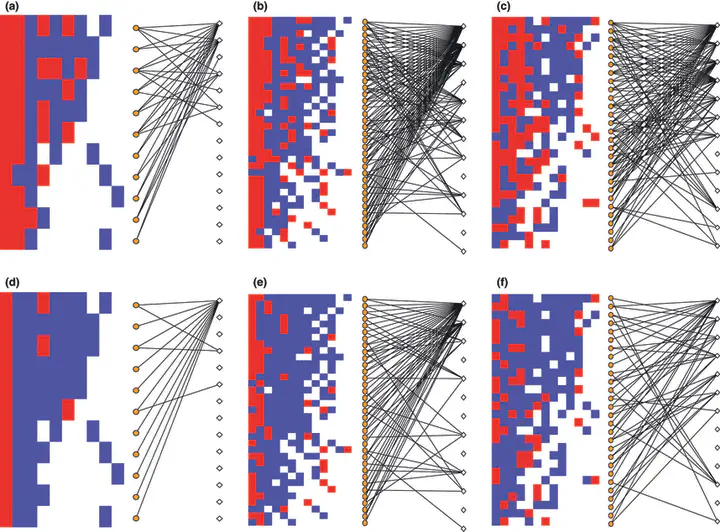Structure and mechanism of diet specialisation: testing models of individual variation in resource use with sea otters

Abstract
Studies of consumer‐resource interactions suggest that individual diet specialisation is empirically widespread and theoretically important to the organisation and dynamics of populations and communities. We used weighted networks to analyze the resource use by sea otters, testing three alternative models for how individual diet specialisation may arise. As expected, individual specialisation was absent when otter density was low, but increased at high‐otter density. A high‐density emergence of nested resource‐use networks was consistent with the model assuming individuals share preference ranks. However, a density‐dependent emergence of a non‐nested modular network for ‘core’ resources was more consistent with the ‘competitive refuge’ model. Individuals from different diet modules showed predictable variation in rank‐order prey preferences and handling times of core resources, further supporting the competitive refuge model. Our findings support a hierarchical organisation of diet specialisation and suggest individual use of core and marginal resources may be driven by different selective pressures.